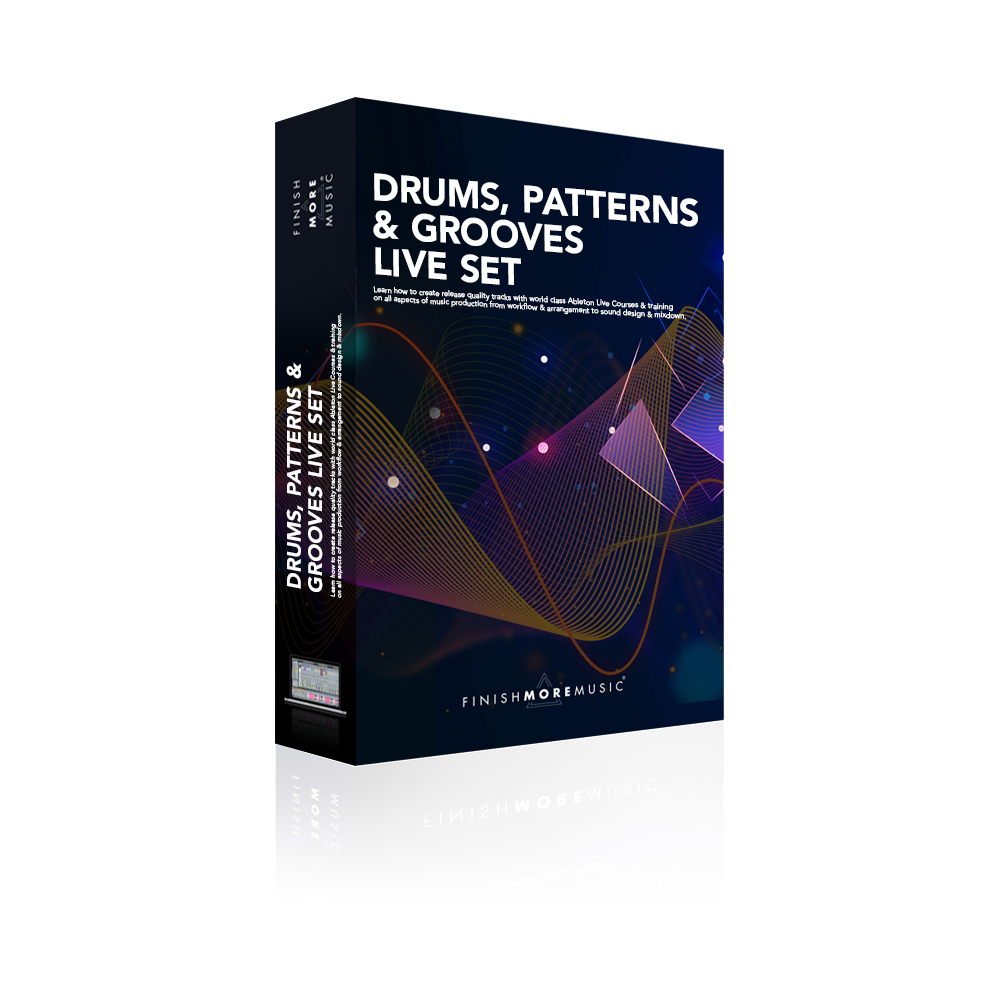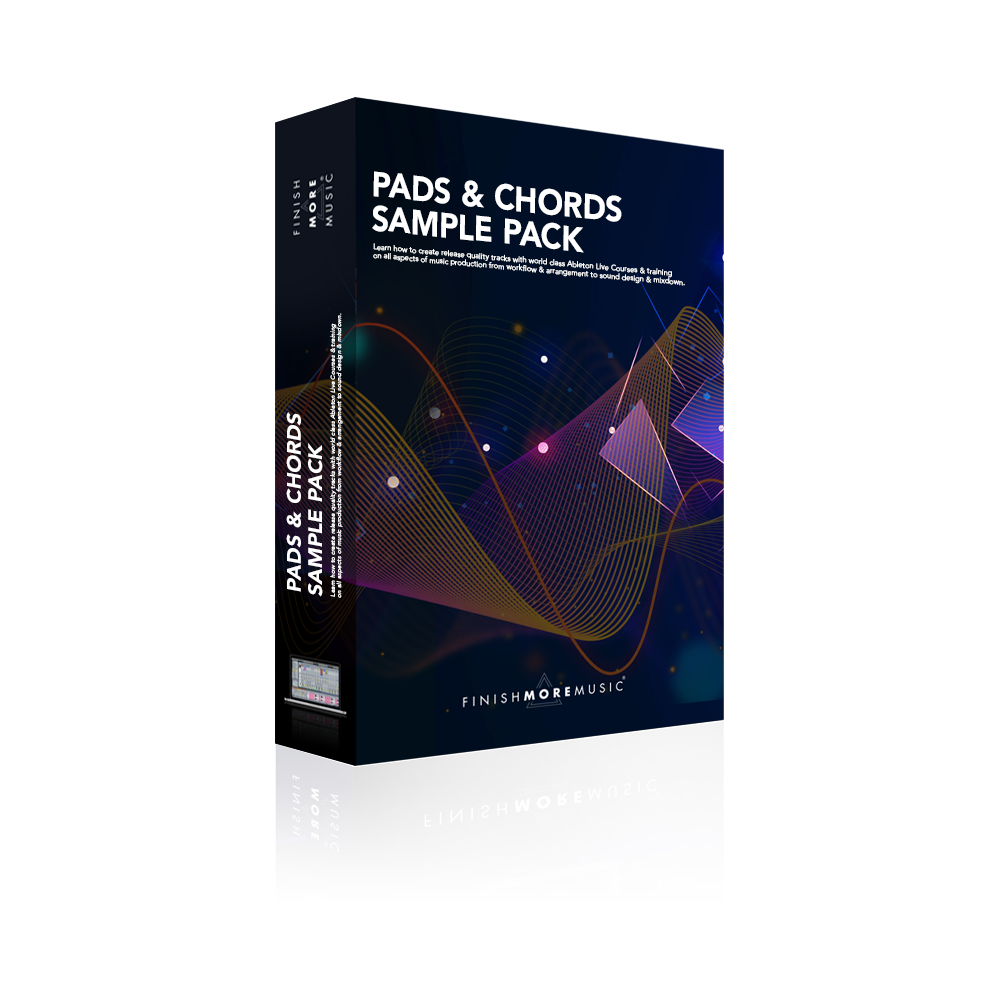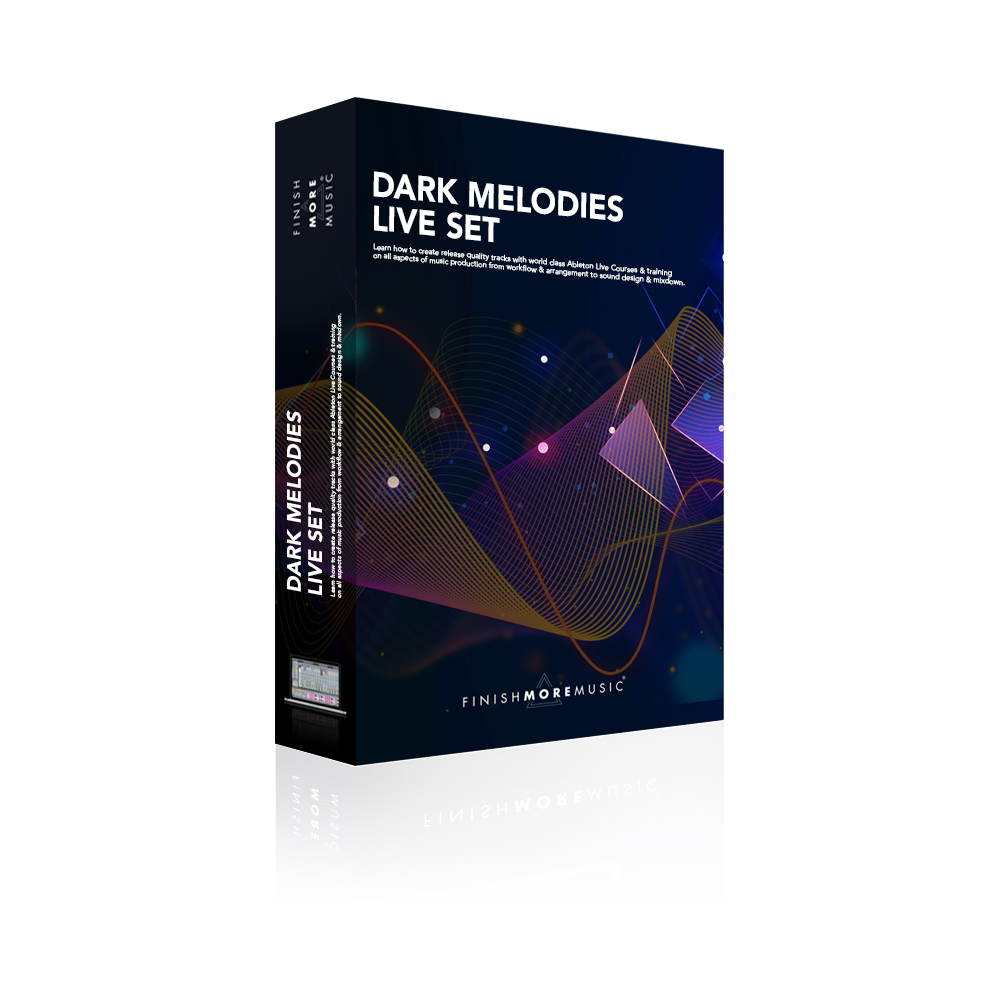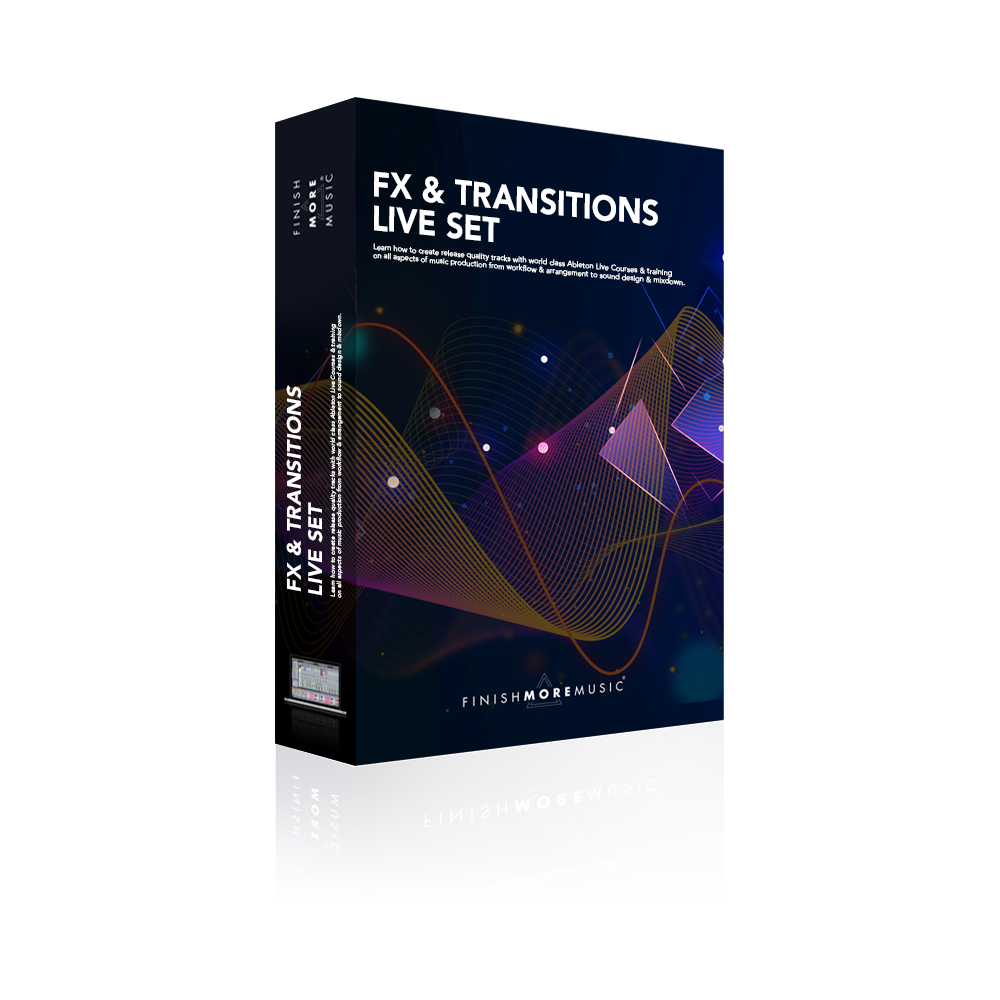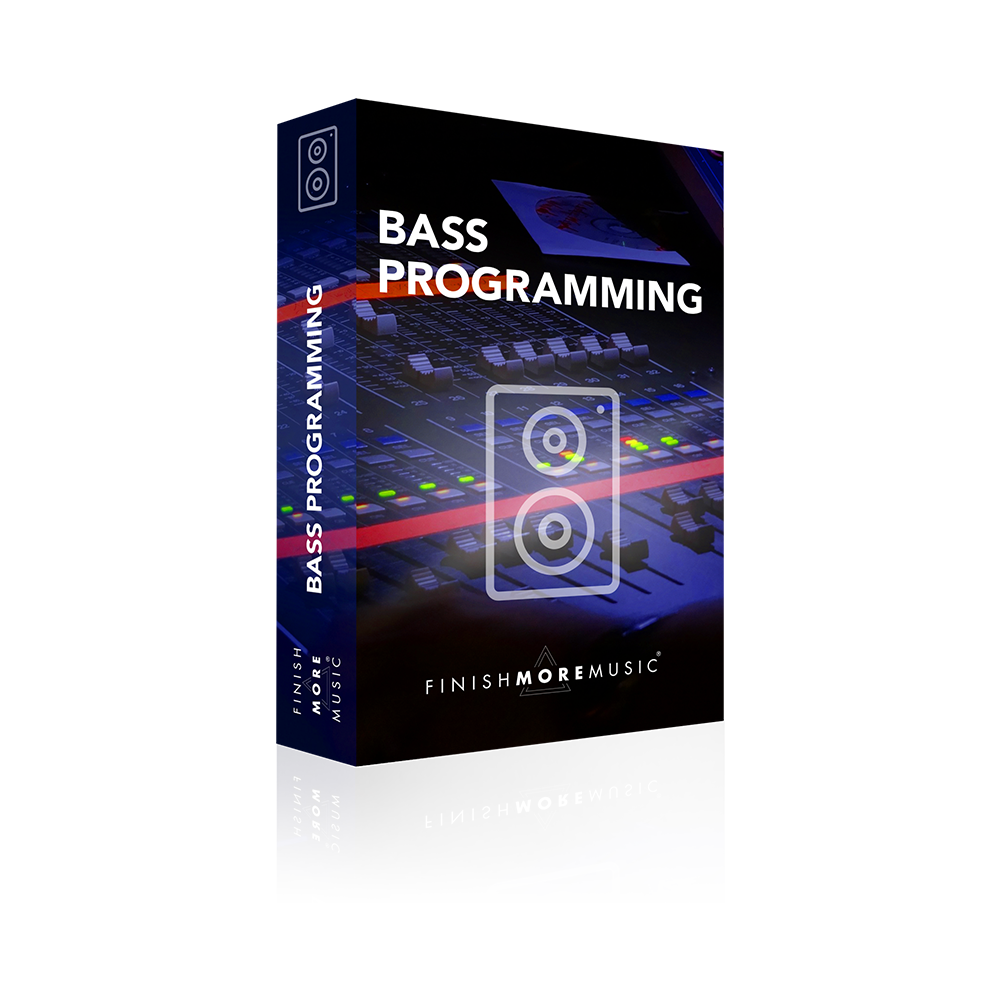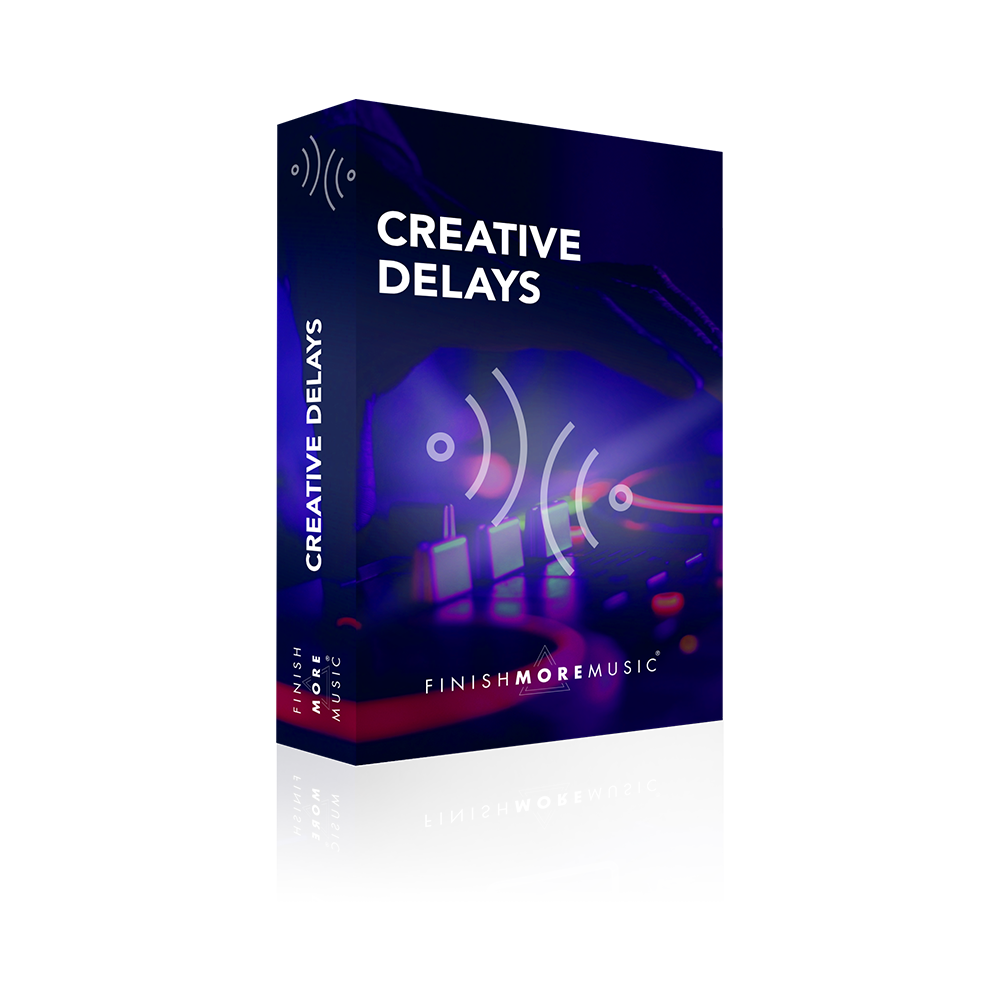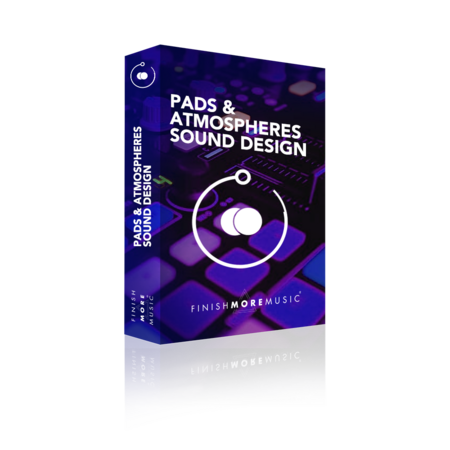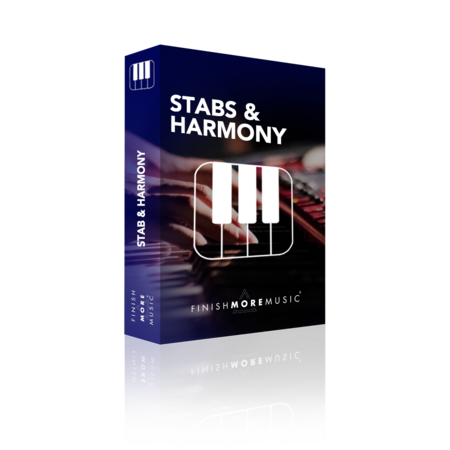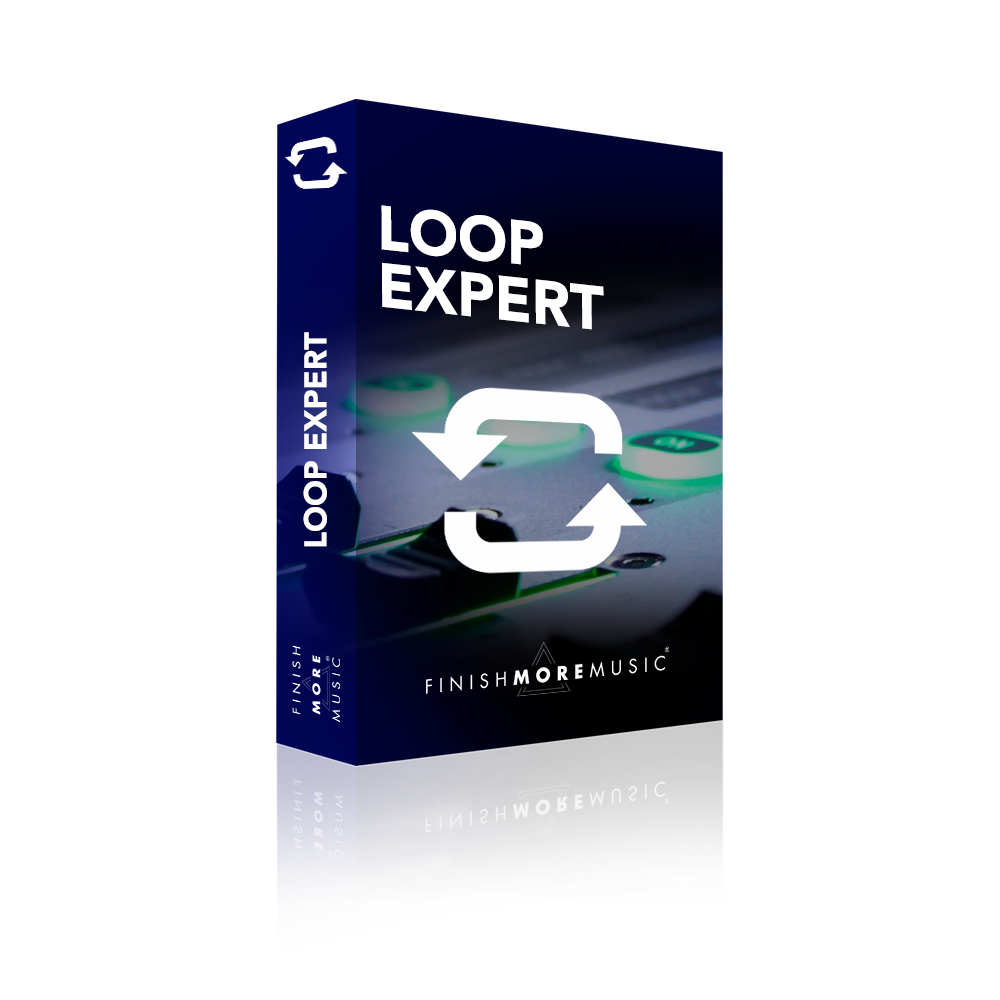Our Black Friday Sale is in full flow! There is now only 1 week left to grab our video courses and Ableton templates from www.finishmoremusic,com. This week’s inside sneak peek is a real gem of a tutorial from our Creative Delays course! If you ever struggle to create groovy, interesting percussion in your tracks, this technique using delays is an incredible way to generate new ideas at a rapid pace. This tip can not only be applied to a variety of percussive sounds, but also works on melodic hits, bass notes or even FX noises for some cool, creative, unique results.
Transcript
In this video, we’re going to take a look at adding some extra percussion in to our loop and this time, we rather play around with the filter delays to see what possibilities that brings. Before we start, I couldn’t resist having a little bit more of a play around with the simple delays, so I did this tom – and it’s just a really simple pattern and again I just use that parallel chain. The only thing I’ve done a little bit differently on this one is I’ve just chucked in a tiny bit of groove here. Other than that, you can see the dry wet is pretty modest and no feedback on either chain, so without…I’ve also added just a little boost on the bottom to make this more of a sort of bassy kind of thing than just a tom or of a baseline, then I’ve just chucked in a clap and we’ve got our hats in here. Let’s have a listen. Ideal! So let’s dive straight in with a percussion. Now you’ll remember we were talking about this idea that our linked delays either air filter delay or a simple delay had a delay line panned left and one-pound right, and what I wanted to do is just really take advantage of that so I’ve loaded up two samples – just bongos nothing to impressive. I didn’t go for anything too wildly different. I’ve got two different samples here and have panned one left and one right. So when I go and grab our filter delay and let’s just draw a couple of notes in here to get us going, sticker might actually on the beat, so quick listen…stop it, that’s just too easy. Okay, back to where we were, I was gonna program something in but you can just see the ideas that these delays throw out, and because we’ve got these two different sounds what we’re getting is the left is playing one sound, the right is playing one sound, and the middle is playing them layered up if you remember that mono sum. So let’s actually create something. I’m gonna toll the pan C, so don’t want my load needs to be too wide, then let’s see these look largely okay. I think what I’m going to do is to do those just Chuck…maybe we’ll leave that one there for now. I’m just gonna Chuck the middle one so that it’s plain and nice even sort of rhythm it’s not on the three or five playing saint to bonkers, and in fact, we will put one of these out there as well and let’s give this a little bit more EQ so we can have a listen. Before I move forward as well I’m gonna just dial these down a touch. I’ll leave that middle one on a much lower volume because it’s in the center of the mix. We’ve already got a kick and a tom in there and let’s hear what this sounds like. Not bad, a little bit messy I think it might be because we’ve got a touch too much going on on the feedbacks. You know what, I’d quite happily run with that let’s just have a play with the dry as well, see what that’s bringing to the table at the moment. Of course because we got force four sixteenths which is a quarter bar, that’s gonna be layering up on top of the kick so don’t really need that dry in there, and we can have a play around with this maybe let’s take that off the kick. Wicked! I really like that so I’m gonna take this down for a second and we’ll leave that one because I really liked it. I like the simplicity of that. Let’s take that off then we add one here didn’t we? This seemed to be working quite well, was it this one? Let’s have a look – I’ve left that on, no wonder. So I really like that as well let’s turn that off duplicate it out. What else can we get up to? Let’s put that one back, stress ain’t different in the middle. That sounds pretty cool as well. Let’s just try this. I wanna hear what it’s like without that tom dominating things. Just loads of cool results on there and you could just it’s a pick and really isn’t it? Let’s get rid of that, let’s duplicate it out and whatever will run with that simple one for now keep it nice and simple. Now obviously, I haven’t even bothered messing around with these, you could put the other note in and see what you get. I mean I’ve no idea what would happen if we maybe do that. Stop it, ok right so super simple. You can see what you’re able to get here.
Now, we’re just using percussion you can use any sounds you want in here and of course I’ve gone for some pretty similar sounds into bongos. Why not try something that’s completely disparate something totally different? It might take a while flipping through sounds to get things you like you can see once you’ve got a couple of sounds that do work together, it’s so quick to stick the patterns in. So that’s programming our drums, we’ve looked at percussion, we’ve got some sort of bassy tom in there and we’ve got some hats .. all super quick with these very basic delays.
Thank you for watching
I really appreciate you tuning in and I hope you’re enjoying the tutorials and taking some real value into your music sessions.
If this video resonated with you and you feel it will have a positive impact on the people you know, please share it by using the social media buttons you see at the bottom of this page.
To make sure you are always the first to know when a new video lands: Subscribe to the FMM Youtube channel here.
Let me know how you get on with the techniques I showed in the videos and if you have any suggestions for future tutorials, ping me a message on Instagram (@IamKeithMills)

